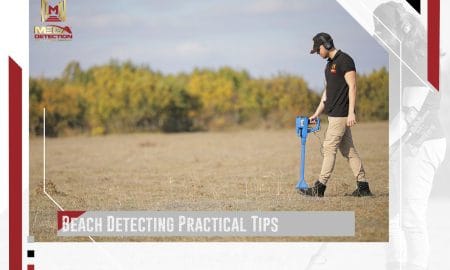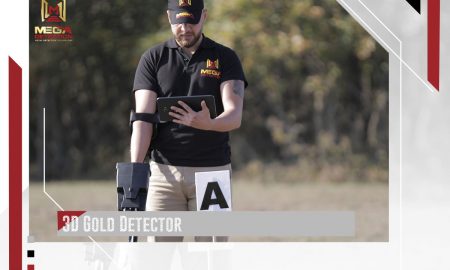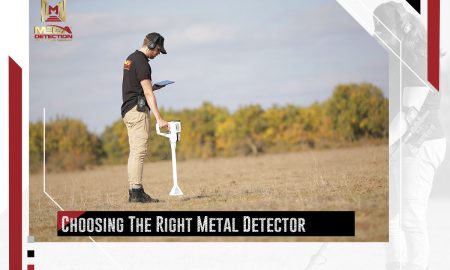Hunting for Gold Nuggets
Hunting for Gold Nuggets
Hunting for gold nuggets is one of the more frustrating types of metal detecting. Most people give up before they ever find a nugget. There are many, many challenges associated with gold detecting, but one of the biggest challenges is definitely trash and iron rubbish. The amount of trash in some of the goldfields is absolutely overwhelming.
You might think that this is the time to turn on your discrimination, but in most cases, that would be the wrong choice. You will miss a lot of gold if you do this.
Why You Should Generally Avoid Using Discrimination
Most coin hunters embrace the use of discrimination mode because it prevents endless digging of trash targets. And when you are hunting parks and ballfields it is usually a good idea.
When you turn on your discrimination, you reduce the sensitivity and depth of your detector considerably. You will miss targets that are at depth, and since most gold nuggets are small, you will even miss nuggets that are relatively close to the surface. Your detector will miss them entirely.
Even worse, even with detectors that have very reliable discrimination, it will still give you false readings. They will sometimes tell you that a nugget is trash, and that a piece of trash is likely to be a nugget.
The reason for this is twofold. One thing is that nugget country is usually made up of very mineralized soils that are challenging for a metal detector. The ground is quite variable and constantly changing, which makes target identification difficult.
And the other variable is that no two nuggets are the same. Odd-shaped, porous, or crystalline gold specimens can be particularly tough for metal detectors to identify. Discrimination will often blank them out completely.
When Do You Use Discrimination for Gold?
Discrimination just isn’t reliable with our current detector technology. Too many variables mean that you can easily walk away form a gold nugget if you use it.
In all honesty, there are some places that are simply too trashy to detect without it. Even the most dedicated and patient prospector is not going to dig every target in a location with hundreds of trash targets.
I have had lots of guys preach the motto to always dig all targets, and its definitely good advice, but I can guarantee you that they don’t always practice what they preach.
If they did, there wouldn’t be so much old iron rubbish still left in the goldfields. I find too many square nails in places that have been pounded by other detectorists. There is simply too many targets to dig everything.
So in these places, I will admit that I will use my discrimination. I do this with the acknowledgement that I am definitely missing some gold.
A metal detector is a tool. They aren’t perfect, and they do make errors. Even a discrimination that isn’t 100% accurate is still more valuable than none at all. And in some areas, using it is the only good option.
Don’t take this advice and think that it’s smart to run in disc mode all the time. I use discrimination very sparingly, and only in a very specific circumstance as outlined above.
You need to be digging some trash to be a good gold hunter. There isn’t a single successful detectorist out there who can avoid trash completely.
Digging trash is part of the hobby. Accept it, embrace it, and keep on detecting until that elusive gold nugget finally pops out of the ground.
How Does Metal Detector Discrimination Work?
It is important to note that while most any VLF (Very Low Frequency) will come equipped with DISC features, PI (Pulse Induction) metal detectors have no discrimination capabilities. This shouldn’t be an issue for most users as PI metal detectors are often expensive in comparison to VLF metal detectors and therefor only purchased by users who would already know that PI metal detectors don’t have discrimination. However, this information should be in the description of the metal detector if you are unsure.
VLF metal detectors work by sending a constant alternating current through a coil which, due to the polarity being reversed thousands of times per second, creates a transmit frequency that is sent into the ground. If this transmit signal encounters metal, a signal which is opposite in polarity to the transmit coil is produced within the object. These currents are known as eddy currents and are a natural response to a metallic object encountering a magnetic field.
DISC works through the same process by which normal metal detection does. The eddy currents produced within the object are first detected by a second coil. These signals are then processed and then amplified to create the sound which lets you know metal has been detected. DISC simply intervenes during the processing of these signals and tells the alert device on the metal detector to ignore certain frequencies or prioritize others.
What is the Difference Between Metal Detector Discrimination and Sensitivity?
While DISC deals with processing signals to determine an objects metallic composition, metal detector sensitivity is simply changing how strong (or rather weak) a signal your metal detector will accept. This means that by increasing your metal detectors sensitivity you may be able to detect objects which are non-ferrous metallic or simply deeper in the ground. While this can be used, in some degree, to exclude certain types of metal it is nowhere near as comprehensive or easy to use as the DISC function. It is for this reason that the two functions are separate and are deemed to have separate purposes.
Using Metal Detector Discrimination to Eliminate Ground Mineralization Interference
Different hunting locations will have different kinds and compositions of soil. In some cases, you will encounter soil which is rich with ferrous minerals that generate eddy currents of their own when affected by a metal detectors signal. While it is unlikely that these signals will be strong enough to elicit an audible response from your metal detector, their effects are not undetected. These signals from the minerals in the soil can overload a metal detectors RX coil with useless target allocation even if a real target is in range of the coil’s detection field.
However, to eliminate these signals from your detection array you simply need to discriminate against Iron signals altogether. Most targets of value will not be affected as Iron is a low value non-precious construction material. In highly mineralized soil, Iron discrimination won’t be perfect but will be undoubtedly useful for finding targets and elimination phantom hits.
The depth of an object, along with the chosen level of sensitivity, can affect which type of metal an object is identified to be by your metal detectors DISC circuit. If an object is detected from the outer edge of a magnetic field then only a portion of the magnetic field will be processed by your metal detectors elimination circuit. Unfortunately, this can result in your metal detector confusing one metal for another which has a similar DISC ID.
For a similar reason to why depth can affect DISC ID, the size of an object will also change DISC ID. Essentially, the larger an object is the greater the signal from internal eddy currents will be. The stronger a signal is the easier it is for your metal detectors DISC circuit to determine metallic composition.
So, it would stand to reason that a smaller target, coupled with low sensitivity, could create a very weak signal. The weak signal a small object produces is no different than a very deep object and therefor will have similar characteristics. This means that the object could have: an incorrectly reported DISC ID, a low and unreliable tone, or even an inability to be detected.
The only metal which is unaffected by surface oxidation is gold and various gold-alloys. Everything else is prone to an unavoidable, and inevitable, oxidation. Oxidation, more commonly known as rusting, happens when a reactive element is exposed to oxygen. In this case it is the production of a myriad of metallic-oxides which we are concerned with.
Metallic-oxides which are produced from corroding objects will bleed into the surrounding soil when moisture is present. This is more commonly known as the halo-effect. It is referred to as the halo effect because a targets field of detection will increase in a radiating pattern around the object.
If the soil which you are hunting in is moist, then the halo-effect can be your best friend. Allowing you to easily find smaller and deeper targets which have had their detection fields increased. However, these metallic-oxides will produce different DISC ID’s which might be discriminated against if you are excluding Iron or even Tin.
Due to the copious amounts of information modern metal detectors can gather and process, even the orientation of an object, in the ground, can affect DISC ID. A perfect example of this is that of the orientation of a coin. A coin may have a strong signal if it is positioned with the flat side parallel to the metal detector coil. A coin may also have a very weak signal if the flat side is positioned perpendicular to the metal detector coil.
The difference in the strengths of these two signals affects DISC ID in a similar way as both depth and size previously have. If the coin is positioned perpendicular to the coil: the DISC ID could be incorrectly reported, a low and unreliable signal can be detected, and in some cases an object will be completely unable to be detected.
Many beginners may find it useful to gain experience from finding various pop can pull-tabs, nails, and other low value high presence objects. Finding these objects can teach a beginner how to use the pin pointer function of a metal detector and how to properly dig for an object. It is in this case that is in fact useful to not use any form of metal DISC.
If you are a beginner but you don’t care much for gaining experience, and instead favor finding only valuable targets, DISC can be incredibly valuable. Without the experience and know-how of an advanced user, a beginner can relatively easily find coins, rings, and other valuable objects. All of this while not being bogged down by constantly finding junk.
In either case, to ensure the value of your choice to, or to not, discriminate for or against certain metals, it is important to become familiar with both the discrimination and sensitivity settings of your specific metal detector.












Leave a Reply